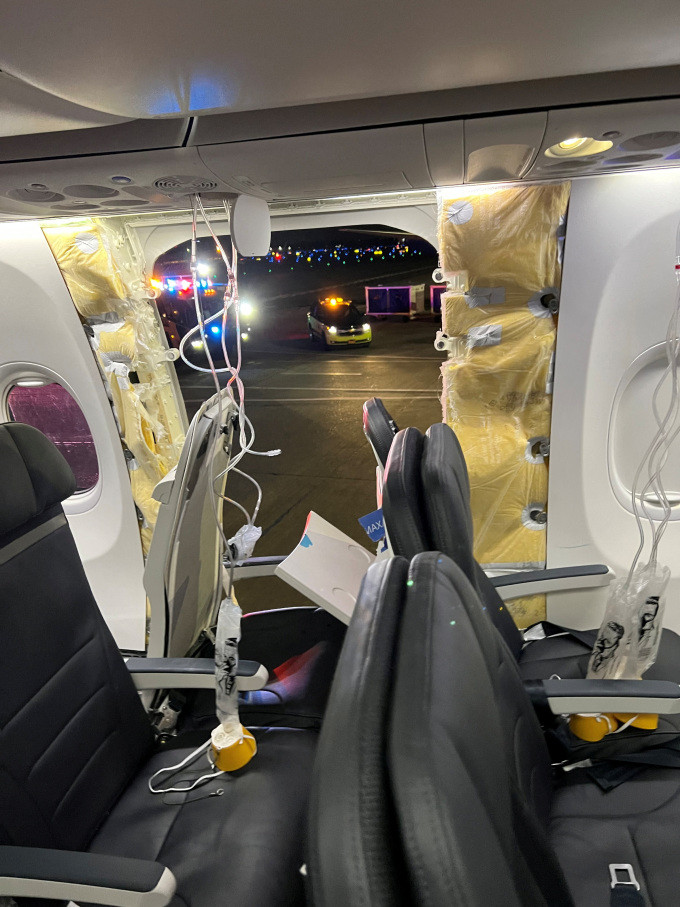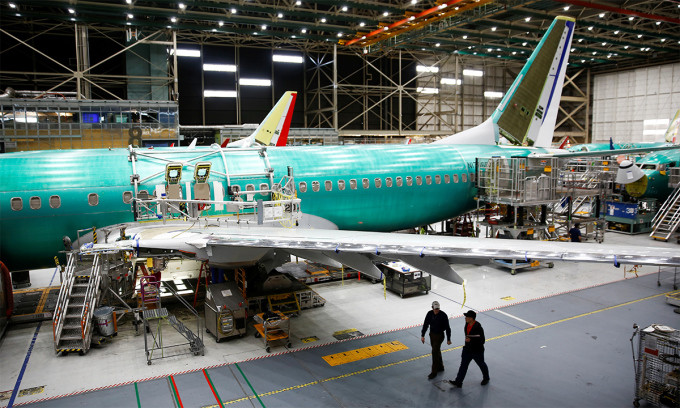Before the 737 MAX 9 fuselage failure, production at Boeing's Renton plant in Washington was facing a number of schedule issues.

Workers at the Renton plant on September 1, 2023, discovered that some screws were broken and needed to be repaired on the fuselage of a 737 MAX 9 assembled by Spirit, a supplier in Wichita, Kansas, and shipped by train to Boeing's factory.
But more than two weeks passed without a fix. The plane’s delivery date was repeatedly delayed before employees raised the priority to Level 3, in an effort to get the attention of senior executives at the plant, according to Boeing’s internal logs. They finally completed the assembly of the plane and delivered it to Alaska Airlines in late October 2023, becoming Flight 1282.
The plane took off from Portland, Oregon, to Ontario, California, on January 5. Just 20 minutes later, the plane carrying 177 people had to make an emergency landing when a section of the upper fuselage, located between the wing and tail, flew off in the air. The part that came off was a metal plate bolted to replace an emergency exit.
The incident sparked federal investigations into Boeing and led to the resignation of CEO David Calhoun in late March. Boeing executives said they would focus on factory quality rather than speed of product completion. The company is also in talks to buy Spirit to address supplier quality issues.
Workers took more than 50 times longer than expected to finish fixing the door seal bolts, according to the operation log. The job was finally completed on the morning shift of September 20, 2023, after a final quality check the day before.
The National Transportation Safety Board (NTSB) has obtained documents and photographs showing that Boeing employees removed the four screws during an inspection at the Renton plant. During the inspection, Boeing technicians replaced five damaged fasteners inside the cabin. However, later photographs show that the technician failed to reinstall at least three screws in the door seal.
Recent incidents have further damaged Boeing's reputation, putting more pressure on the top US aircraft manufacturer's leadership.
When former Boeing CEO David Calhoun took over in January 2020, he promised to improve the safety and engineering standards of the aircraft. Two fatal crashes in 2018 and 2019 involving the 737 MAX 8 killed 346 people and led to the 21-month grounding of the aircraft starting in March 2019.
Then the Covid-19 pandemic hit, grounding flights and forcing factories for Boeing, rival Airbus and suppliers like Spirit to halt production. By 2022, the company was under pressure to meet surging demand for new planes as travel resumed in the wake of the pandemic. Boeing hired thousands of new employees and steadily increased 737 MAX production. Mr. Calhoun set financial targets based on higher production estimates.
Boeing factories have been working around the clock to return to pre-MAX production levels for the past year. Boeing delivered 580 737s in 2018, the year of the first crash.
Boeing CEO committed to delivering 450 737s in 2023. By August last year, Boeing had delivered only 271, leaving airlines disappointed and having to cut flight schedules because they did not receive the planes as expected.
"Is there pressure? It's both yes and no. We still do the same work. However, we have deadlines every day and so does my team. If we're behind, we have to find a way to get it done on time," said an anonymous Boeing worker.
Federal Aviation Administration (FAA) regulators and factory union leaders have been at odds with Boeing over production practices, pushing Boeing to resume second-party quality inspections that had been cut.
Last September, 737 production fell to a two-year low. Boeing delivered just 15 new planes to customers that month. Executives told airlines and investors that they wanted to increase production to 38 a month.
Boeing ordered inspections of the 737 MAX in December 2023 after reports of loose screws in the tail control system. Four months earlier, Boeing discovered problems related to improperly fastened screw holes in the rear pressure bulkhead.
This caused the supplier Spirit to stall, causing delays at Boeing’s factories. To ensure delivery time, Boeing continued to accept defective fuselages from Spirit, including the 737 MAX production line with a broken door seal.
“Years ago, our production process wasn’t as fast. I’m not saying the speed was the problem. But something happened and I don’t know what it was,” said an unnamed Boeing employee.
Another Boeing employee said the 737 MAX problems were putting pressure on Renton factory workers. “It was a setback for all of us,” he said.
When Boeing's production system is working properly, it takes the Renton plant 1-2 weeks to ship a 737. The screw defect was discovered the day after the shipment from Spitit arrived in Renton, and it took them 18 days, 12 hours and 9 minutes to fix the problem.
Spirit workers were in Renton to address the screw issue. Six days after the Renton worker discovered the broken screw, the production log stated “condition not yet resolved.”
Boeing wanted to replace the screws. But factory workers couldn’t do it until September 19. “According to Spirit management, the work is committed to be done today,” the September 19 production log reads.

A Boeing quality control manager scheduled a final inspection that same day before shipping. Assembly of the line was completed on September 20. The remaining work was carried out over the following month.
Boeing reported financial results on October 25, showing a loss of $1.64 billion in the third quarter of 2023 and lowered its 737 delivery target for the year. The company now expects to deliver 375-400 planes, instead of the 450 it had planned.
However, even that target would require the Renton plant to significantly increase production in the final weeks of the year.
Mr. Calhoun also sent a memo to employees that day, dismissing criticism of the company.
“I have heard people outside our company wonder if we have lost our way. I think the opposite is true,” he said.
Boeing delivered the 737 MAX to Alaska Airlines on October 31. The plane began flying 11 days later, before the incident occurred.
HA (Synthetic)